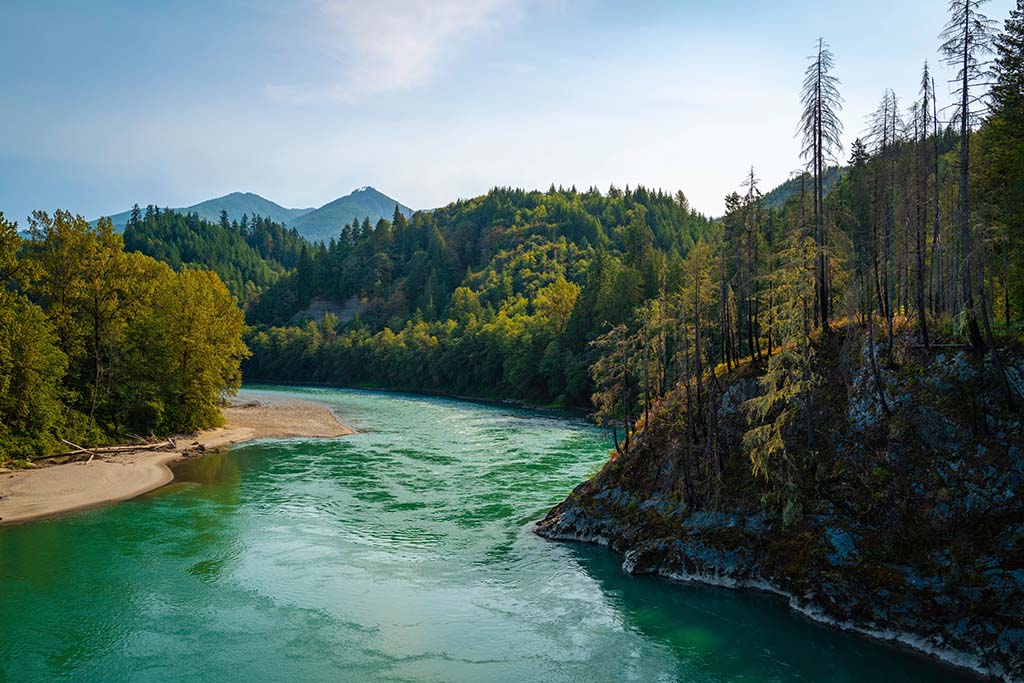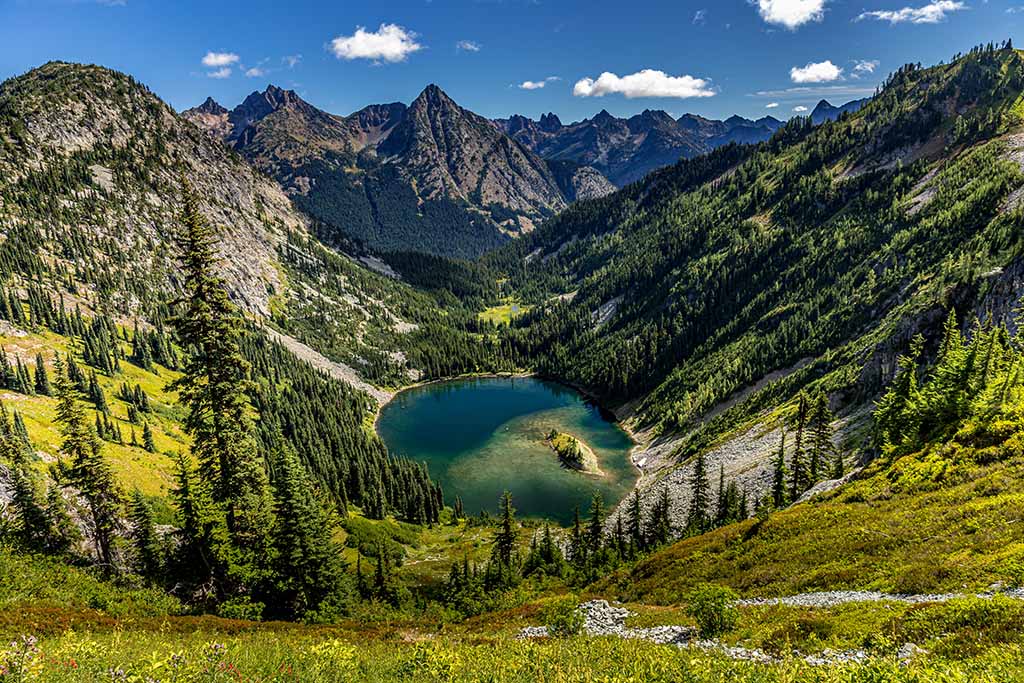Success Criteria: Discuss the question at the end of the article.
The Skagit River and Native People
Western Washington was home to several Native American tribes, including the Lummi, Samish, and Nooksack. These tribes built their lives around the Skagit River, the region's largest river, using it as a major highway and a vital source of food. The waters of the Skagit were teeming with life, especially with all five species of salmon: chinook, sockeye, silver, chum, and pink.
 Above Picture: Skagit River
Above Picture: Skagit River
Salmon and steelhead, after traveling long distances in the ocean, returned to the Skagit River. This annual journey wasn't just about fish coming home; it held deep spiritual and cultural meanings for the tribes. The return symbolized renewal, life, and the bond between nature and the people. For tribes, the salmon were more than just food; they were a sign of prosperity, a gift from nature, and a crucial trade item.
To show their gratitude and respect for the salmon, tribes held grand ceremonies. They celebrated the arrival of the first fish, hoping that by honoring them, nature would bless the tribes with abundant salmon runs and successful harvests in the future. Fishing, with its predictable cycles, became a major part of their lives. Unlike hunting, where success could be uncertain, the salmon's annual return was a dependable source of food. This ensured that tribes had a reliable way to feed their families and strengthen their communities.
Journey Through the North Cascades: From Native Paths to Traders' Tracks
 Above Picture: Lake Ann
Above Picture: Lake AnnThe upper Skagit native people knew the North Cascades incredibly well. They navigated through the treacherous terrain, especially using the route known as Cascade Pass. When the seasons were right and the weather was favorable, they would trek through this pass to reach the north end of Lake Chelan, a place they named “Stehkin.” However, these native paths remained a secret to the outside world for many years. It wasn’t until the late 1700s that new faces started to appear in the North Cascades; these were the Euro-American fur traders eager to explore and trade in the region. Among them was Alexander Ross. In 1814, Ross undertook a significant journey, making his way across the North Cascades using the Cascade River. This river wasn't just any waterway; it was a tributary to the Skagit. Ross's exploration marked one of the early encounters between Euro-Americans and the vast wilderness of the North Cascades. Today, you can experience a similar path by hiking Maple Pass. You can’t miss Lake Ann.
Discussion Question
Given the important cultural, spiritual, and practical significance of the Skagit River and its salmon to the Native American tribes of Western Washington, how might the arrival and activities of Euro-American fur traders, such as Alexander Ross, have impacted the tribes' relationship with the river and their surrounding environment? (Think about factors like trade, cultural exchange, and potential conflicts or cooperation)